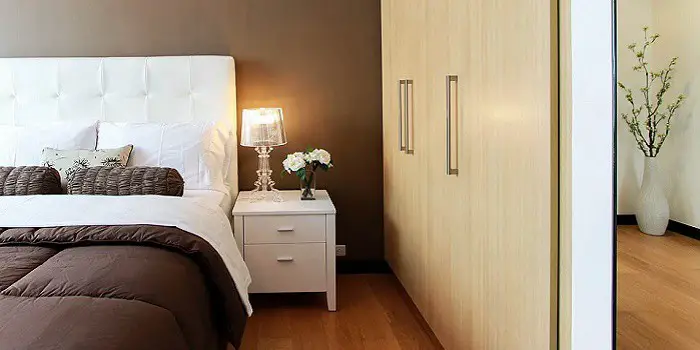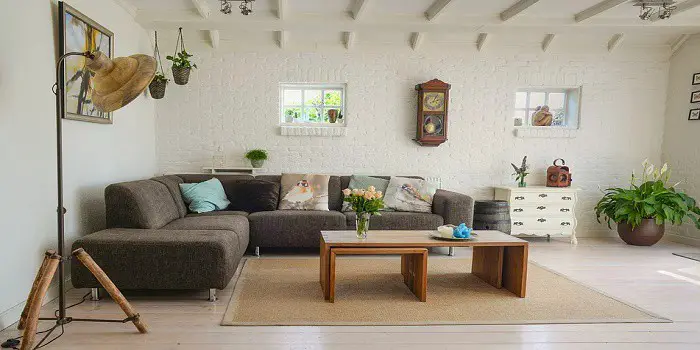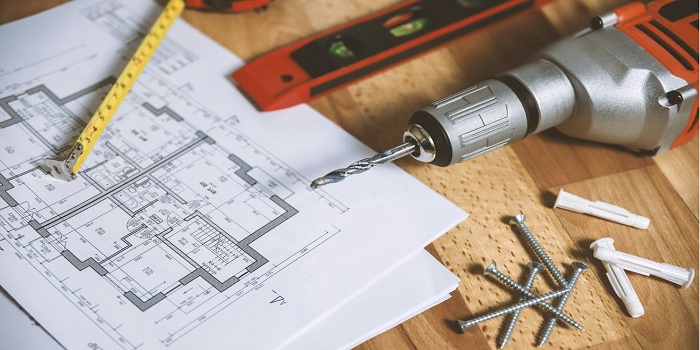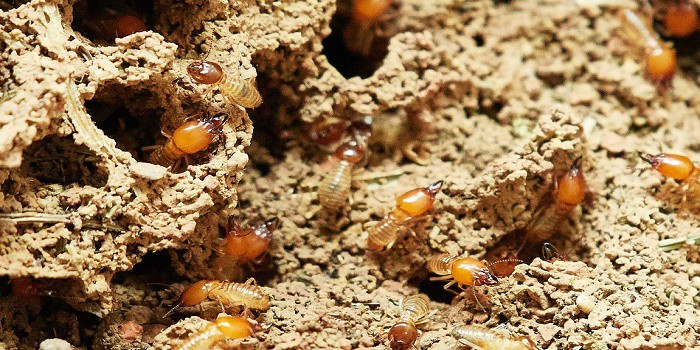
Termites are recognized as one of the most troublesome pests all over the world. They are small and numerous and can cause extensive damage in and around wood items in your home.
Especially in the United States alone, the termite invasion costs homeowners and landlords more than $5 billion in structural damage and treatment yearly.
The truth is that anything and everything made of wood is unsafe from these little wood-boring insects. Not only wood, but they can also eat through the products like fabric, drywall, cardboard, etc., where they can find cellulose to feed on.
Once you see them in your house, the very first thing you should try to do is DO NOT PANIC. Contact the professionals, schedule an inspection, and make a treatment plan.
Below I will give you a few more insights into what to do with furniture infested with termites, should you throw away furniture with termites, and how to prevent the problem in the future.
Protecting Wood from Termite Infestation
Often there are news reports of all the furniture damaged or chewed up, and the main culprit behind it was found to be termites.
Not only that, but these wood-boring insects can live and damage the trees and plants in the garden.
An important component is eliminating termites in residential and commercial areas by following a few DIY steps. Some of them include…
1- Seal the area
You need to take initial quite essential steps to secure the wood and eliminate those termites that invade and infest your home.
You can do this by simply caulking and sealing windows, doors, and cracks around your house by using an effective wood sealer and then applying anti-termite paint.
Readily available at your local hardware supply, the use of termite control goods could be the next step you need to take to get rid of these harmful wood-boring insects.
You can install screens on your doors, windows, and porch, these are a necessity if you are wary of termite infestation.
2- Fix the leakage
Termites are naturally attracted to damp and moist habitats (mainly wood furniture) because they need water to survive. Ensure all leaks and standing water, inside and outside your home, are repaired.
Dirty wet gutters in your home are also ideal for termites to thrive. So keep your gutters clean and free of debris to prevent these bugs.
3- Check your storage
Termites can feed heavily on wood stored in your house.
So keep large quantities of firewood and other tree trunks and loose branches away in the house (like in your garage, basement, storage shed outdoors, etc.)
If you keep large amounts of wood on your property, you happen to be only inviting a feast of termites.
4- Termite bait and poison
Using termite baiting methods or a liquid termite-killing product is ideal for outdoor usages, like stopping termites from eating your wood fence.
Place the bait near infested areas and vaporize the termiticide in the same areas where there are termites found.
Using termite poison is one of the identical forms of effective disinfection of the premises of termites.
However, many people prefer to avoid pollution caused by chemicals and termite poison in view of the safety of children or pets that may accidentally ingest these chemicals in ignorance.
Although the poison is safe to touch, eating or breathing this termite poison can be extremely dangerous.
Immediate medical treatment is recommended in such situations.
5- Use termite-proof wood
While no wood type is completely termite-proof, there are a few that these insects avoid feeding on.
These include pressure-treated wood and manmade composite lumber products specially designed for homes to deter termites and increase the lifetime of the structures.
Termites also avoid specific wood species, such as redwoods, yellow cedar, Laotian teak, and cypress. However, these types of wood are not as long-lasting as chemically treated lumber.
6- Use stainless steel or aluminum
Steel is resistant to high levels of heat, pests, and corrosion. This makes metals like steel and even aluminum one of the choicest materials in today’s buildings.
Using steel (in place of wood) ensures that the building can withstand adverse environmental and weather conditions.
Plus, there is no need to treat steel like timber to avoid being eaten by termites. These are also no-pollution products that are safe for handling by most people in your home.
7- Get in touch with technicians for extermination
Above all, you need to get your property inspected by professionals. These exterminators can use various strategies to get rid of the termites.
The treatment measure is most commonly a good dose of borate, which can be applied to the nests, the damaged wood, and even the soil around the area.
Borate is also one of the most popular termite repellents, often sprayed on wood (before priming and painting) to prevent termites.
There are some well-researched and placed steps that professionals use to exterminate termites. They include:
- Site analysis
- Termite extermination
- Damage control
- Infestation prevention
They will either pick one of these depending on several factors (one of these factors is how much the site is infested) or can follow these steps one after the other to eradicate the termites.
Due to these effective termite control measures put in place, it’s most likely that the termites will not come back again in the future.
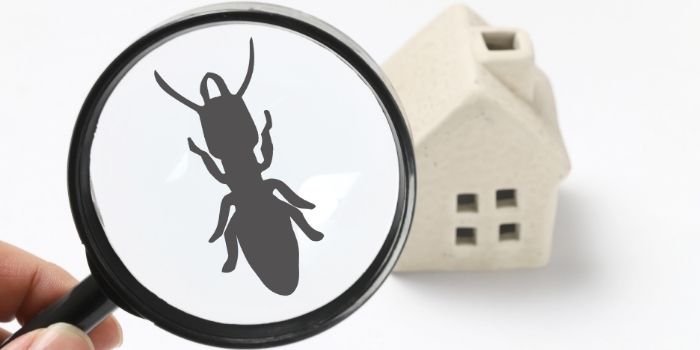
How to Dispose of Termite-Infested Wood?
If you have wood furniture that is infested with termites, there is a chance that the furniture can be saved, and you do not need to throw it out.
The first step is to have a professional assess the damage and see if the furniture can be repaired. If the damage is too severe, the furniture needs to be disposed of.
Sometimes, the furniture can be treated with a chemical that will kill the termites. This option should be discussed with a professional before any chemicals are used.
But once you and the professionals have determined that the wood is infested with termites and cannot be treated – you will need to dispose of it.
The best way to dispose of old wood severely infested with termites is to take it to your local landfill. There, the wood will be taken care of in the proper way and will not pose a threat to your home or the environment.
a) Disposing of Downed Trees
If you’re planning on disposing of any trees or shrubs, especially if they’re close to a water source, be aware that there’s always the possibility that they could be infested with termites.
Cut them into segments and take them to a disposal facility.
After disposing of the majority of the plants, don’t forget to bag up leaves, branches, and other debris left behind–these can be taken to a landfill or added to regular trash pickup.
b) Don’t Bury Termite Infested Wood
Do not bury wood if you want to prevent termites, as this will only act as an attractant.
Even treated wood is likely to be appealing to these pests, so it’s effectively like delivering food right to their doorstep.
c) Do Burn Termite Infested Wood with Safety
It may appear to be an appealing option to get rid of termites once and for all by burning the termite-infested wood, but it is dangerous for you as well as everyone else around you.
It might be difficult to maintain a controlled fire and, when not done carefully, might put people in danger while also causing a fire that spreads to unintended locations.
You should never burn painted wood, as it may release harmful toxins into the air.
If the wood is coming from a building constructed before 1978, there is a greater chance that the paint contains lead. The safer option would be to take this painted wood to a proper disposal facility.
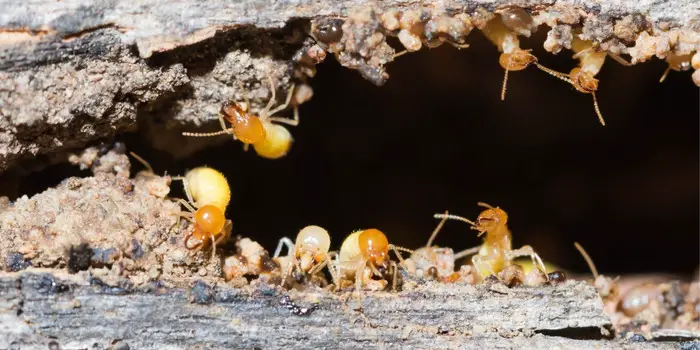
Signs of Termite Infestation in Wood Structures
Sagging floors, holes in the wood furniture, and hollow parts of your foundation beams are all severe warning signs of termites being present on your property.
Take a screwdriver and a flashlight with you to your basement and crawl space. Check the wood by pushing the screwdriver into the wood to test its strength.
If the wood gives off quickly and falls apart, you may have a termite problem you need to deal with.
A few other signs that can help detect termite activity in your home are:
- Mud tubes
- Termite droppings
- Stuck wooden windows or doors
- Peeling paint or damage under wallpaper
At times you may also find the dangerous signs of termite swarming – like shed wings, dead termite bodies, and tears in the wood structure.
Be aware that sometimes you cannot see direct evidence of termite infestation, but that does not mean you have to stay in ignorance of it.
Is Heat Treatment Good for Termite Control – The Pros and Cons
Heat treatment for stopping termites is a common practice. But does heat treatment really work?
Let’s take a look at the pros and cons of this type of termite control so that you can make an informed decision about whether or not heat treatment is right for your home.
PROS
- Heat treatment can be used to target specific areas where termites are active
- Heat treatment penetrates the wood, killing termites in the process
- It is fast-acting, and it does not require the use of chemicals
- It can reach inaccessible areas that other methods of control cannot
CONS
- Heat treatments can be expensive
- It can sometimes be difficult to control the temperature
- The heat generated during treatment can damage some materials in your home
- If not performed correctly, heat treatment can actually make the problem worse
The cost of heat treatment for termites will vary depending on your home’s size and the infestation’s severity. Typically, you can expect to pay between $500 and $1,500 for this service.
For services other than heat treatment, a professional company can charge you anywhere between $100 and $300 depending on the processes and materials they use.
Remember that whatever treatment plan you try, there is always a possibility that termites will come back after the treatment.
This is why it is essential to have a professional company perform the treatment and follow up with them regularly.
The best way to prevent termites from coming back is to have a regular maintenance plan in place every month. This will help identify potential problems early on and prevent a full-blown infestation.
Final Thoughts
Termites ruin the wood in your home, from the ceiling to the walls to all your furniture.
Before you know it, you will run into thousands of dollars in repair work.
With that said, the last thing you want is to introduce a product that may be harmful to those living on your property.
So, before you use a pesticide or fumigation treatment for termites, be sure to check for alternatives that may do the same thing and not contain any toxic elements.

Hi, I am Mark Garner a professional carpenter, woodworker, and DIY painter. I live in the small city of Peoria, Arizona as a semi-retired woodworker. I have started this blog with a simple motive to help you with my wood experience in this sector. If you like to know more about what I love doing and how it all got started, you can check more about me here.

